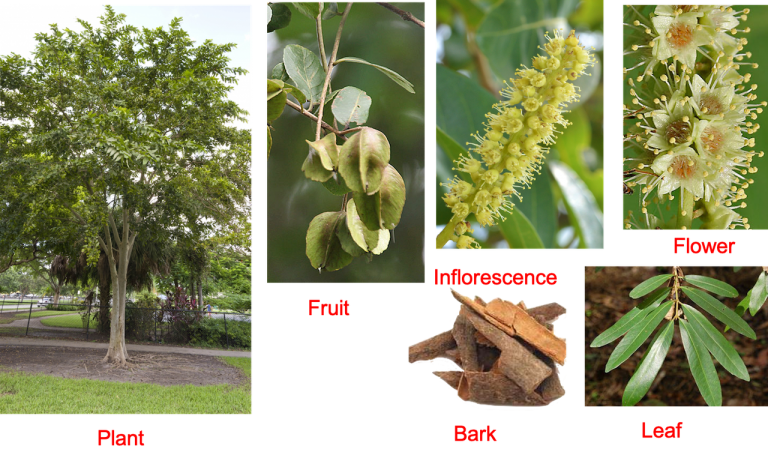ARJUNA
The tree which is revered to be one of the best cardio tonic in the present day world of Ayurveda is the plant ARJUNA. It is commonly found in greater part of India especially in the region like banks of rivers, etc. But ironically this plant is not mentioned to be Hridya or cardio-tonic in the past references. Instead the references denote its use in the conditions like wounds, fractures, etc. The botanical name is Terminalia arjuna (Roxb) Wight & Arn. In this name the word Terminalia denotes the presence of the leaves towards the end of the branches or branchlets. The word arjuna in the name is derived from the sanskrit name itself has a meaning as white colour.
PLANT DETAILS
BOTANICAL NAME
Terminalia arjuna (Roxb) Wright & Arn
FAMILY
Combretaceae
NOMENCLATURE
VERNACULAR NAMES
- Kannada – Bilimatti
- Malayalam – Maruttu
- Tamil – Yarutai
- Telugu – Tellamdi
- Hindi – Amla
- English – White murdah or Arjuna Tree
SANSKRIT SYNONYMS
- ककुभ (Kakubha) – The branch are spread out.
- अर्जुन (Arjuna), धवल (Dhavala) – The bark of the tree is pale white in colour.
- नदीसर्ज (Nadisarja) – Commonly seen near water resources like rivers and is having similarity to the tree Sarja.
- इन्द्रद्रु (Indradru) – A large tree that grows to great height.
- वीर (Veera), वीरवृक्ष (Veeravriksha) – Arjuna is one of the greatest warriors of Ancient times. Hence the name.
SAMHITA CLASSIFICATION
- Charaka Samhita – कषायस्कन्ध (Kashayaskanda) & उदर्दप्रशमन (Udardaprashamana).
- Sushruta Samhita – न्यग्रोधादि (Nyagrodhadi) & सालसरादि (Salasaradi).
NIGHANTU CLASSIFICATION
- Dhanvantari Nighantu – Amradi Varga
- Bhavaprakasha Nighantu – Guduchyadi Varga
- Raja Nighantu – Prabhadradi Varga
- Kaiyadeva Nighantu – Aushadhi Varga
BRIEF MORPHOLOGY
A large evergreen tree with huge trunk and horizontally spreading branches, smooth bark that flakes off in large pieces, whitish in colour. The bark is pinkish- white, sapwood is reddish white while the heartwood is brown in colour. Leaves usually subopposite, oblong, pale dull green above and pale brown beneath, petioles are usually with 2 prominent glands at the top immediately below the leaf. Inflorescence is short axillary spikes or terminal panicles. Flowers are sessile, white or yellow in colour. Fruits are drupe, 5cm long, ovoid, fibrous, woody with 5 hard projecting wings and with 1 seed.
PHARMACOGNOSY OF OFFICIAL PART
MACROSCOPY
YET TO BE COMPILED
MICROSCOPY
YET TO BE COMPILED
PART USED AND POSOLOGY
PART USED
त्वक् (Bark)
DOSE
चूर्ण (Powder) – 1 to 3 gms स्वरस (Juice) – 10-15ml, क्वाथ (Decoction) – 50-100ml.
PHYTOCHEMISTRY
The bark contains, fproteins, carbohydrates, phenols, tannins, flavonoids, saponins, glycosides, steroids, terpenoids and alkaloids. It also contains a crystalline compound Arjunine, a lactone, arjunetin, essential oil, tannin, calcium carbonate, aluminium, magnesium, organic acids, colouring matter, sugar, etc.
रसपञ्चक कर्म PROPERTIES AND USES AS PER AYURVEDA
गुण (Properties)
- रस (Rasa) – कषाय (Kashaya)
- गुण (Guna) – लघु (Laghu), रूक्ष (Ruksha)
- वीर्य (Veerya) – शीत (Sheeta)
- विपाक (Vipaka) – कटु (Katu)
- प्रभाव – None
कर्म & प्रयोग (Action & Indications)
- दोषकर्म (Doshakarma) – कफपित्तशामक (Kaphapittashamaka)
- धातुकर्म & मलकर्म (Dhatukarma and Malakarma) – Main actions – व्रणरोपण, मेदोहर, मेहघ्न, स्वेदहर, सन्धानीय, हृद्य (Vranaropana, Medohara, Mehaghna, Swedahara, Sandhaneeya, Hridya)
- Other Actions – ज्वरघ्न, शोथहर, स्थम्भक, मूत्रसंग्रहणीय, विषघ्न (Jwaraghna, Shothahara, Sthambhaka, Mutrasangrahaneeya, Vishaghna)
- प्रयोग (Prayoga) – Mainly भग्न, क्षतक्षीण, विष, तृषा, प्रमेह (Bhagna, Kshataksheena, Visha, Trisha, Prameha) also useful in श्वास, प्रदर, चर्मरोग, ज्वर, अतिसार, रक्तस्राव, etc (Shwasa, Pradara, Charmaroga, Jwara, Atisara, Raktasrava, etc)
AYURVEDIC FORMULATIONS
CLASSICAL
- अर्जुनारिष्ट
- ककुभादि चूर्ण
- पुष्यानुग चूर्ण
PROPRIETARY
- Cardipro
- Arjunahills
- ZeroblockX
AGRONOMY
ENVIRONMENT
The plant grows in all types of soils but prefers humid, fertile and red laterite soil. It occurs naturally in tropical and sub-tropical regions between 22-33 Deg C. It can tolerate temperature from 5 to 48 Deg C. Even though it can tolerate rainfall upto 1800mm but prefers 1000 to 1500mm. The pH of the soil preferable is around 5.5 to 6
CULTIVATION
The part useful for propagation are the seeds. The seeds are collected from plants that are 6 year old and above that have either fallen on the ground or from the branches. The seeds are viable for 1 year after collecting it. The seeds can be either directly sown in nursery beds or soaked in boiling water and kept as it is for 24 hours. The germination starts after 8-12 days. These seeds are transferred to polythene bags for further growth. Then about 10 month sampling is transferred into the fields especially in the month of July or August. Around 120 plants can be planted in 1 acre of land. The irrigation is required during the summer season along with good drainage of water.
HARVESTING
The tree starts to flower on the 6th year of plantation. But the harvesting of the bark is to be done from the 10th year of plantation. The bark thus harvested is to be upto 5cm width and length upto 25cm. Around 200kg of dried bark can be harvested from one acre of plantation. The total lifespan of the tree is 50 years.
STORAGE
After harvesting, the bark is dried in well-ventilated shade or rooms. Upon drying the barks are stored in airtight polythene bags or boxes.
VARIETIES AND SUBSTITUTES OR ADULTERANTS
VARIETIES
None
ADULTERANTS
NO KNOWN ADULTERANTS
SUBSTITUTES
NO KNOWN SUBSTITUTES
TOXICITY
TOXIC SYMPTOMS
- As such there is no proved toxicity of the plant.
ANTIDOTE
- Not Applicable as such.
शोधन or PURIFICATION METHOD
- NOT NECESSARY
THERAPEUTIC USES
EXTERNAL USES –
The bark is applied over the fractured part of the body. The powders of the bark is often dusted on parts where there is bleeding such that to arrest the same. The juice of fresh leaves is used as ear drops to treat earache. The ash of the plant is applied on the affected part to treat snake bite and scorpion sting. Leaves are used for bandaging wounds. The decoction prepared from the bark is also used for cleaning wounds, ulcers, etc.
INTERNAL USES –
The bark is ground and boiled in milk is given internally as cardiotonic. The powder of the bark is given internally with honey to facilitate healing of fractures and treat different wounds. The decoction prepared from Arjuna and Chandana is given internally to treat spermatorrhoea.
CONTROVERSY (IF PRESENT)
YET TO BE COMPILED
LIST OF RESEARCH STUDIES
- Mandal, S., Patra, A., Samanta, A., Roy, S., Mandal, A., Mahapatra, T. D., Pradhan, S., Das, K., & Nandi, D. K. (2013). Analysis of phytochemical profile of Terminalia arjuna bark extract with antioxidative and antimicrobial properties. Asian Pacific journal of tropical biomedicine, 3(12), 960–966. https://doi.org/10.1016/S2221-1691(13)60186-0
- Dwivedi, Shridhar, and Deepti Chopra. “Revisiting Terminalia arjuna – An Ancient Cardiovascular Drug.” Journal of traditional and complementary medicine vol. 4,4 (2014): 224-31. doi:10.4103/2225-4110.139103
- Amalraj, Augustine, and Sreeraj Gopi. “Medicinal properties of Terminalia arjuna (Roxb.) Wight & Arn.: A review.” Journal of traditional and complementary medicine vol. 7,1 65-78. 20 Mar. 2016, doi:10.1016/j.jtcme.2016.02.003
The video on Arjuna emphasises on the various aspects of the plant especially with respect to its cultivation and its characteristics for identification such that they are preserved for the future generations.



